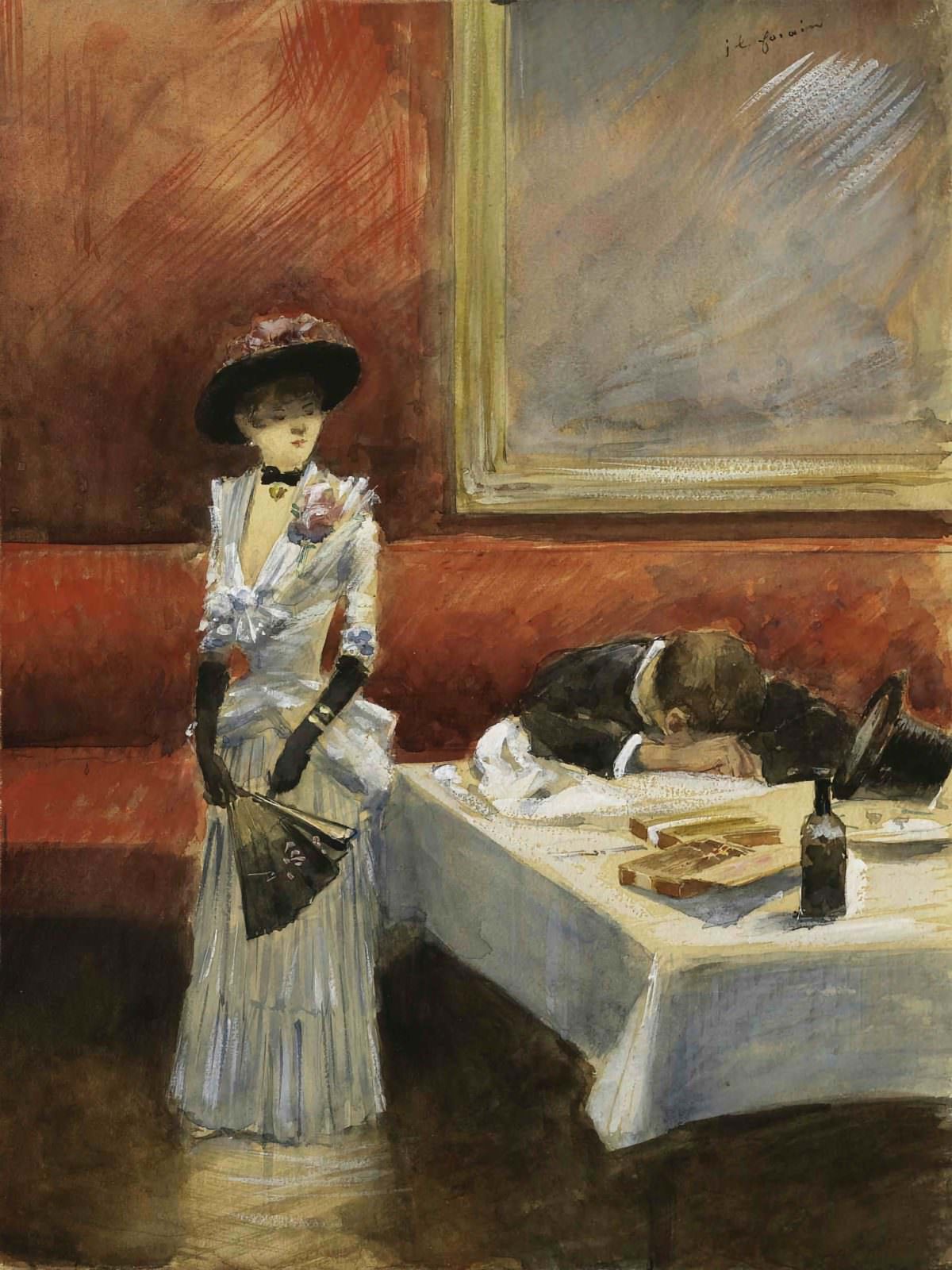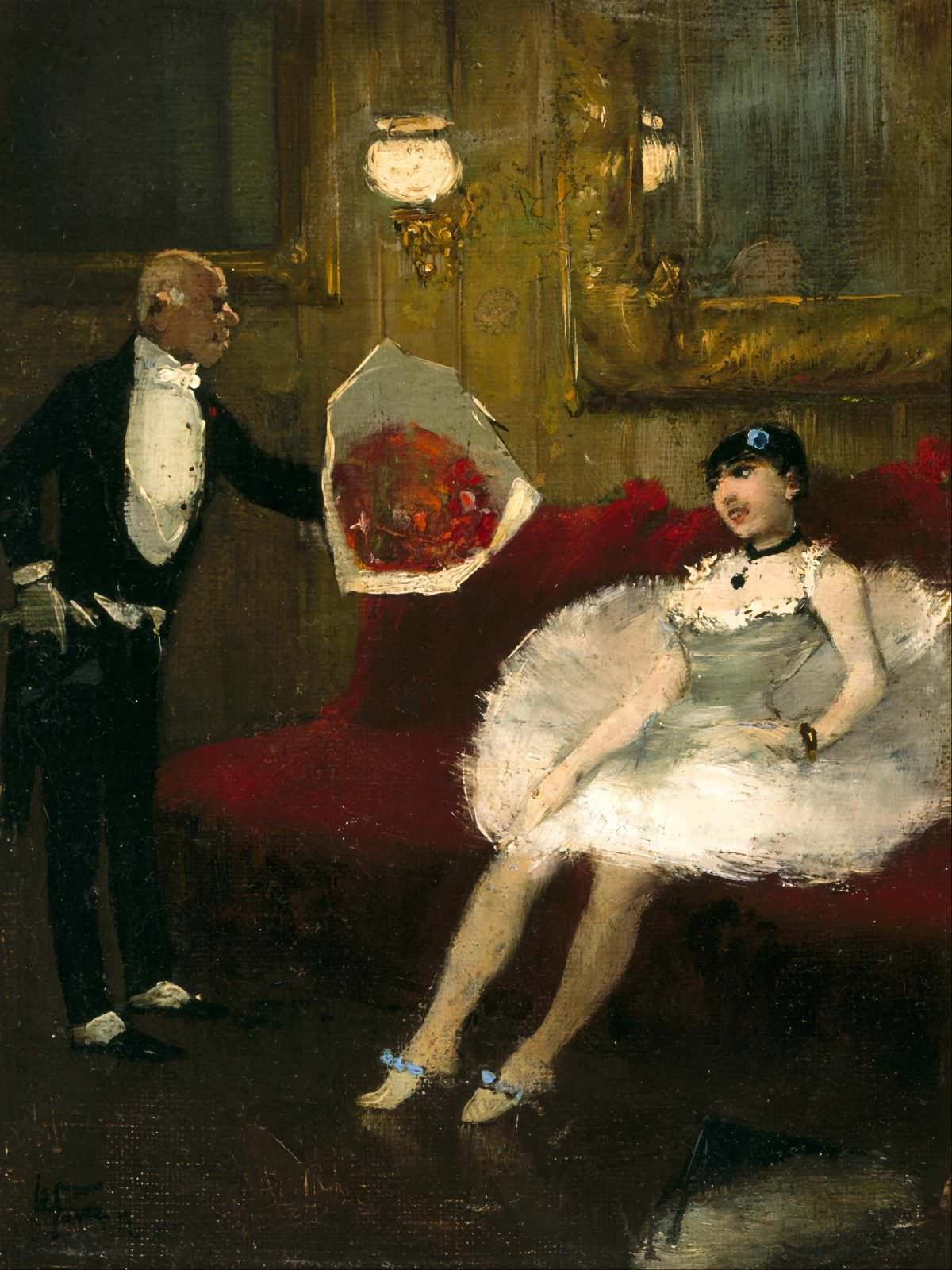Jean-Louis Forain, a man of many talents and a keen eye for the absurd, painted late 19th century Parisian society not as it wished to be seen, but as it truly was. His canvases weren’t filled with romanticized visions of elegant balls and leisurely afternoons in the park. Instead, Forain delved into the grittier side of life, exposing the vanities, vices, and vulnerabilities of the Parisian elite.
A Satirist’s Brush
Born into humble beginnings, Forain rose through the ranks of Parisian society, befriending artists, writers, and poets like Degas, Manet, and Rimbaud. But his sharp wit and satirical eye never dulled. He saw through the façade of glamour and sophistication, using his brush to capture the hypocrisy and pretensions of the upper class.
Theaters and Tribunals: Stages for Human Drama
Forain’s paintings often depict scenes from theaters and courtrooms, places where human drama played out in all its messy glory. In his theater scenes, we see not the grand spectacle on stage, but the bored faces of the audience, the furtive glances, and the hushed whispers. His courtrooms are filled with tension and anxiety, as defendants await their fate and lawyers engage in verbal sparring.
Read more
The Dark Side of Pleasure
Forain didn’t shy away from depicting the darker side of Parisian life. His paintings of brothels and cafes reveal a world of fleeting pleasures and hidden desires. He captured the loneliness and isolation of individuals caught up in the pursuit of pleasure, their faces etched with weariness and regret.
A Master of Observation
Forain was a master observer of human behavior. He had a knack for capturing the subtle nuances of expression, the fleeting gestures that revealed hidden emotions. His paintings are filled with details that tell a story: a raised eyebrow, a clenched fist, a furtive glance.
Forain was also a skilled caricaturist, using exaggeration and distortion to highlight the flaws and foibles of his subjects. His caricatures are not merely funny; they are biting social commentaries, exposing the vanities and hypocrisies of the Parisian elite.
Forain lived through a time of great change and upheaval in France. He witnessed the Franco-Prussian War, the Paris Commune, and the rise of the Third Republic. His paintings reflect the social and political tensions of the era, capturing the anxieties and uncertainties of a society in flux.
Forain’s unique perspective on Parisian society sets him apart from his contemporaries. While other artists were painting idealized portraits of the upper class, Forain was exposing their flaws and foibles. His paintings are a valuable historical document, providing a glimpse into the hidden underbelly of late 19th century Paris.











